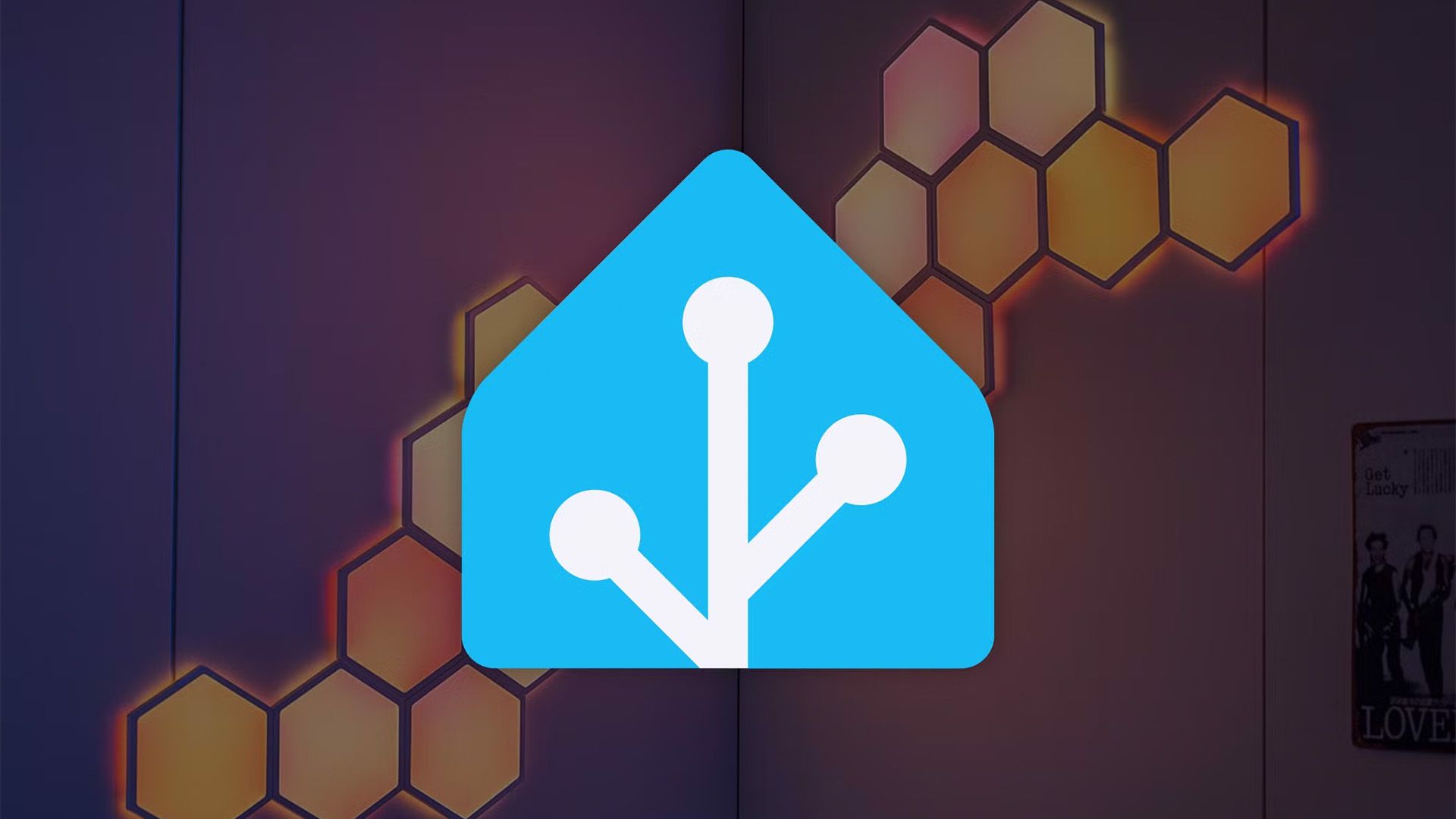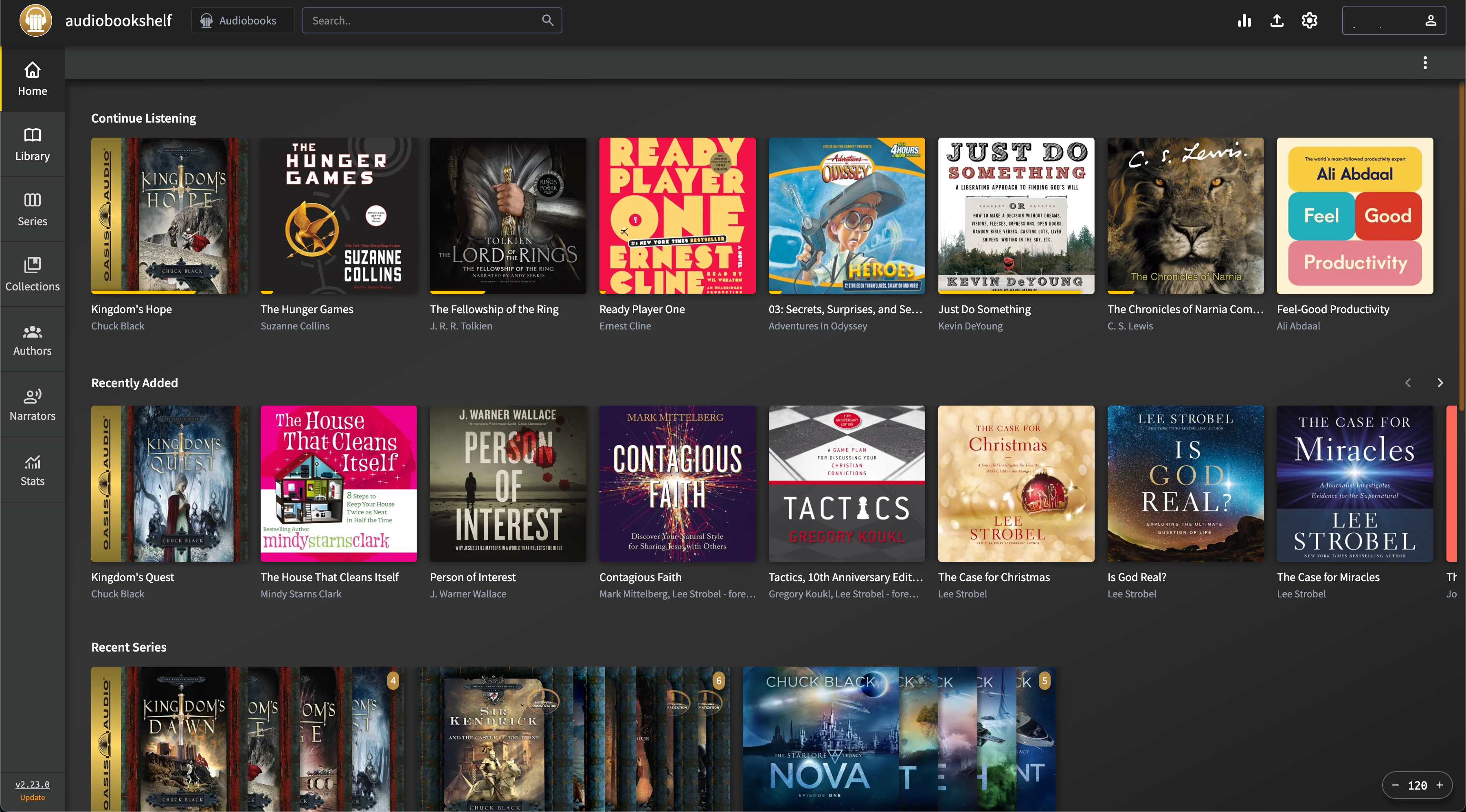I self-host a lot of apps in my homelab. Some are just for fun and I spin up and down as needed, and others are crucial parts of my homelab’s infrastructure that I can’t live without. Here are the seven services I make sure are always running.
7
Plex
My homelab serves several functions, with one of the primary uses being my media server. I’ve been a Plex user for well over a decade, and have no plans on leaving Plex anytime soon.
While there are those who aren’t happy with the direction Plex is going, I’m the exact opposite. I might not use a ton of the new features that Plex has, but I love that I don’t have to continually buy the Plex app on various devices to watch anymore because I have Plex Pass. Also, Plex just works and it functions great for my use cases.
There’s no telling when I or someone else in my household will be using Plex. I’ve watched content at 3AM, noon, 6PM, and just about every time in-between. Because of this, Plex is always running on my server and is set to only update once per week early in the morning on Sundays, so there’s as little downtime as possible.

Related
What Is Plex and How Does It Work?
Streaming services are just as expensive as cable. So, why not make your own streaming service with Plex?
6
Scrypted
While I used to rely on various cloud-hosted services to keep my camera recordings stored, I recently made the switch to a self-hosted network video recorder: Scrypted.
With Scrypted, I’m able to unify all of my cameras to record to one singular location, which makes it easier to browse footage or add more cameras. Plus, all the cameras I bring into Scrypted can be integrated with HomeKit as well, which is a bonus for me.
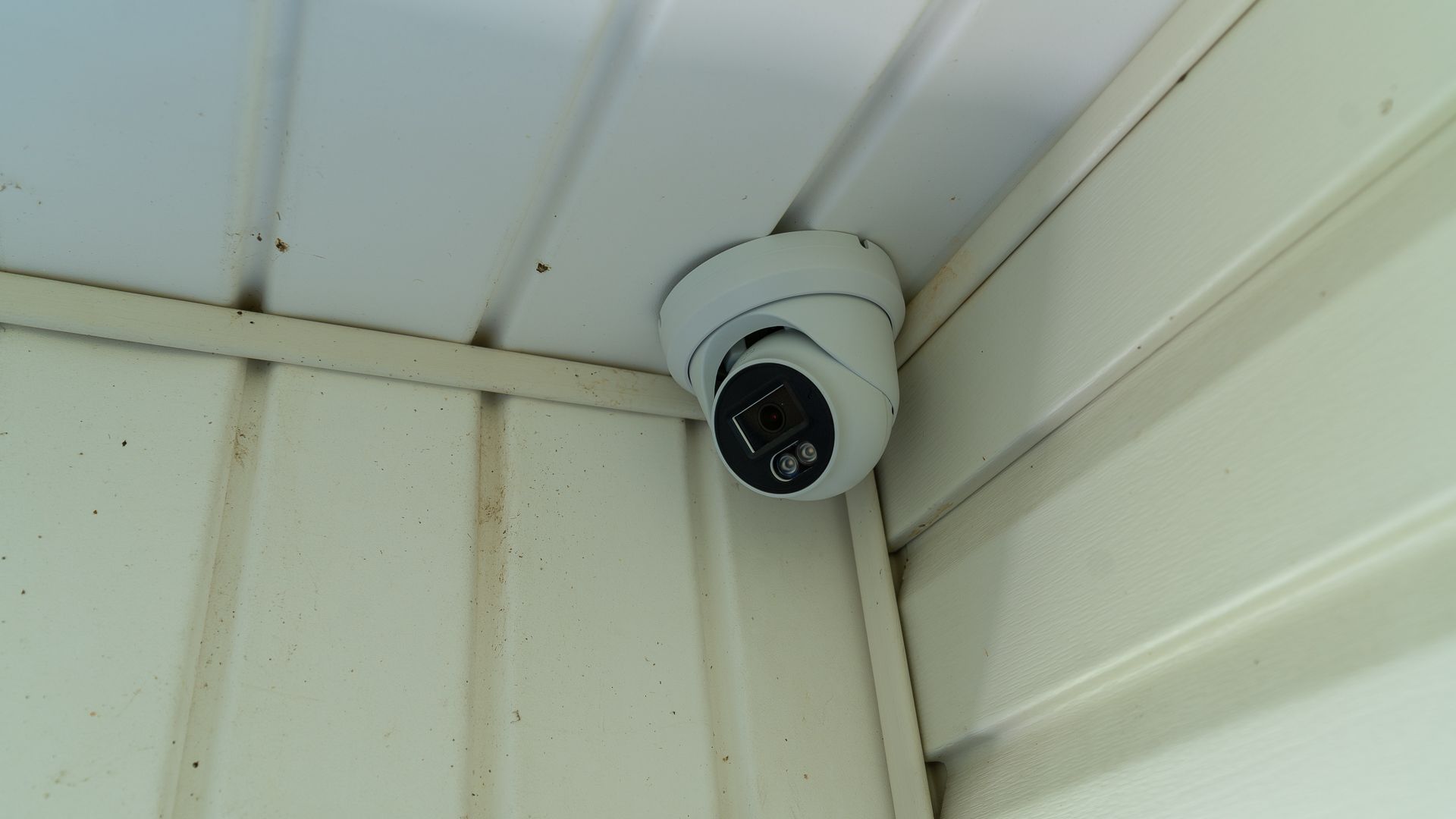
Related
Why and How I’m Switching to Local Storage for My Security Camera Setup
I’m done renting space in the sky.
5
Home Assistant
Home Assistant is a service that I rely on in the backend of my smart home. While I rarely interface with Home Assistant directly, it runs my HomeKit accessories and that makes it something I utilize all the time.
I have a number of smart home scenes throughout my home, and almost all of them rely on non-HomeKit native devices which Home Assistant controls. Going to bed? Home Assistant turns off the bathroom lights and my bedroom lamps. Waking up? The entire living room and kitchen rely on Home Assistant to turn the lights on.
It’s amazing how many things Home Assistant controls in my house, and if it doesn’t ever work, I’m pretty upset. It’s crucial to me that Home Assistant is reliable and always running, so it has to be up 24/7/365 (or as close to that as I can achieve).

Related
How Home Assistant Changed My Apple Smart Home for the Better
It’s not only useful, it saved me money too.
4
Pterodactyl
If you’ve not heard of Pterodactyl, that’s okay. It’s not ultra-well-known unless you’re in the game server realm, but it’s something that I absolutely rely on.
Pterodactyl handles all of my game servers that I maintain. I actually run quite a few servers. A couple Minecraft servers for me and friends to play on, a Satisfactory server for a buddy and I, an Ark: Survival Evolved server for a friend, and soon another Minecraft server for my brother-in-law.
These game servers need to be available for people whenever they want to play. While downtime is understandable for maintenance, that’s really the only time I try to have these servers down. Otherwise, I try to keep my game servers always online and available, and Pterodactyl does a fantastic job with that.

Related
How To Get Started With Pterodactyl For Game Server Management
Pterodactyl is a server management platform that uses Docker containers to manage instances of applications.
3
Audiobookshelf
I recently migrated away from Audible to audiobookshelf for my audiobook listening, and there’s no chance I’m going back. Because of this, I need my audiobooks to always be available.
Audiobookshelf works fantastically, and I really enjoy using the service, actually. While I can download books to listen offline in Plappa, my streaming app of choice on iPhone, I prefer to stream when I can just because that method doesn’t take up storage space on my iPhone.
For that reason, I need the server to always be available. Similar to Plex, I’ve used audiobookshelf in the wee hours of the morning, in the afternoon, and when going to bed. It’s crucial for me that it’s always available.

Related
How I Replaced Audible With a Self-Hosted Alternative
Who needs Audible when you have your own server?
2
Speedtest-Tracker
Internet speed is important to me. I pay AT&T for a certain speed, and I expect to get that speed a majority of the time. That’s why I run Speedtest-Tracker in the background on my server.
I don’t access the Speedtest-Tracker interface often, but I do want it to always run. I really only log in if I’m trying to troubleshoot something. However, if it wasn’t running in the background, then I wouldn’t be able to access historical data.
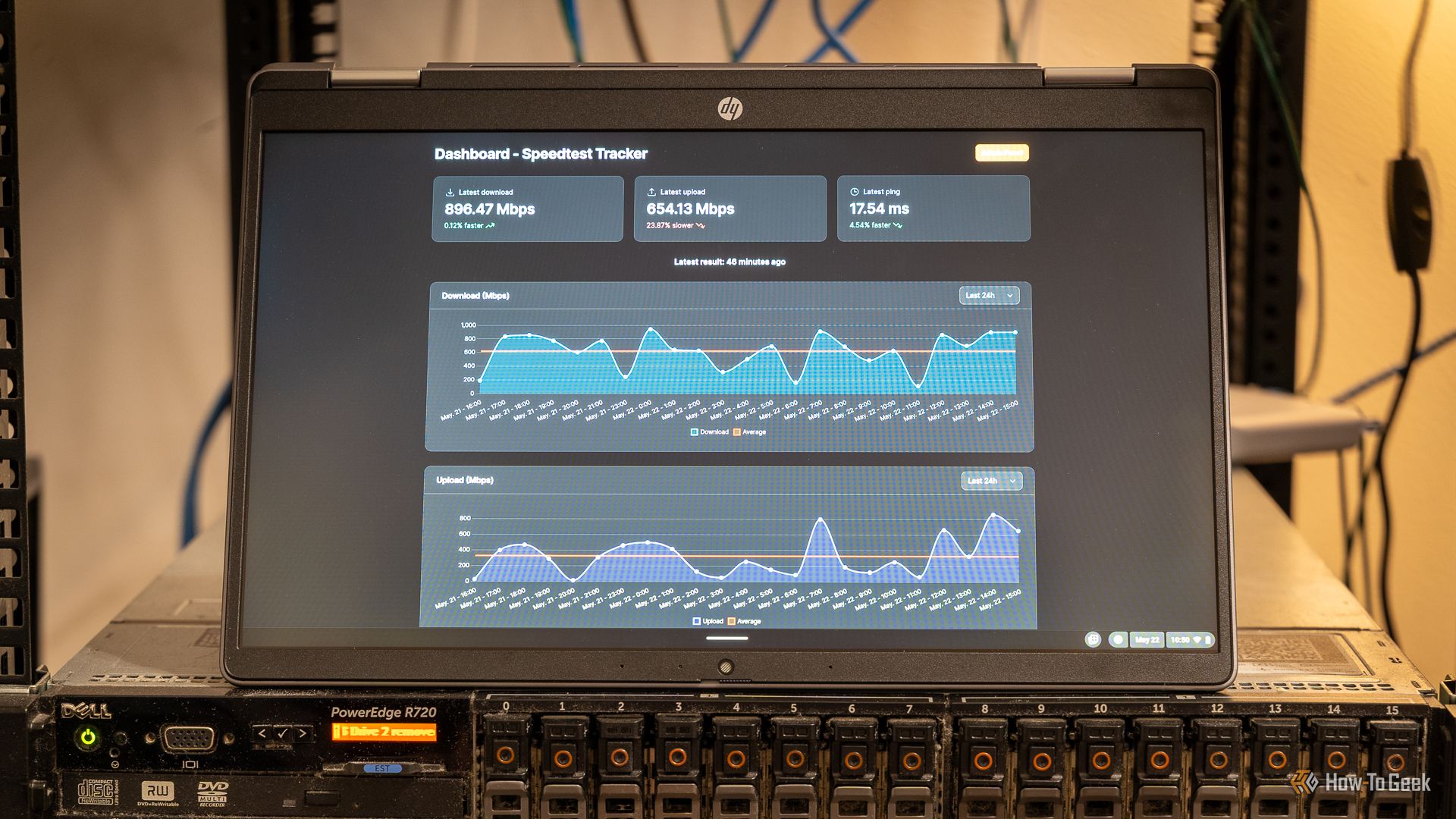
Related
This Docker Container Turned My NAS Into an Internet Performance Dashboard
Do you monitor your internet speed?
1
Nginx Proxy Manager
With all the services I run in my homelab, I rely on Nginx Proxy Manager to handle all of my reverse proxy and SSL traffic. I host a number of websites or external web services on my servers, and Nginx Proxy Manager routes the traffic between everything.
This is how I’m able to navigate to subdomain.domain.com and have it land at various web services. From dedicated Minecraft domains to audiobooks, eBooks, and more, Nginx Proxy Manager handles it all.
If Nginx Proxy Manager goes down, a vast majority of my services also go down, so it’s absolutely a crucial service in my homelab that I have to keep running 24/7/365.
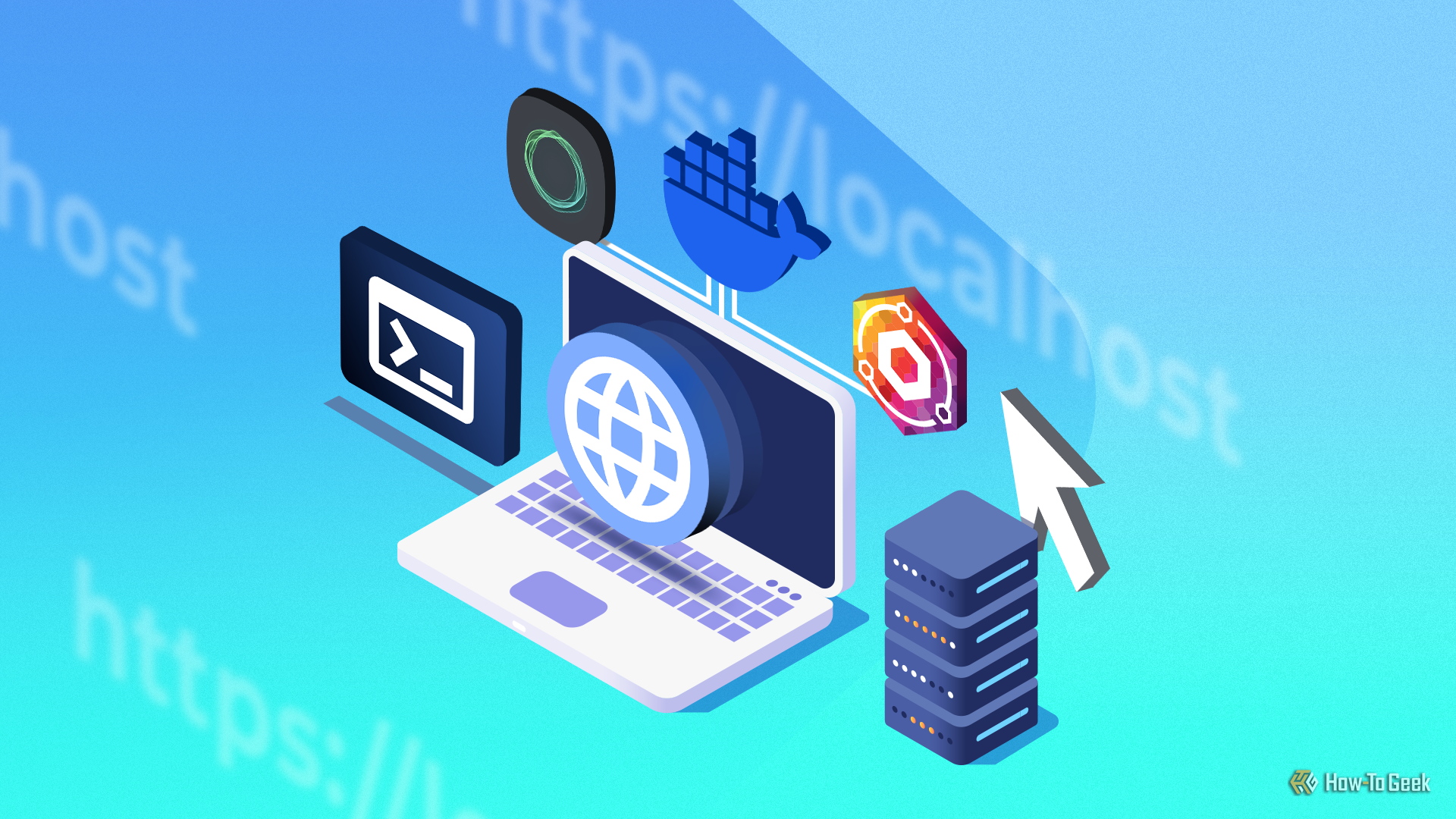
Related
How to Host Your Own Website with Docker and Nginx Proxy Manager
Warning: May cause uncontrollable urges to self-host everything.
While I run these seven apps 24/7, there’s another Docker container that I absolutely can’t live without: Portainer. While Docker-CLI is just fine for managing these services, Portainer delivers an easy-to-use interface that allows me to manage my containers in a few simple clicks. If you’ve not tried out Portainer, it’s actually pretty easy to deploy on your Docker server and is well worth checking out.

